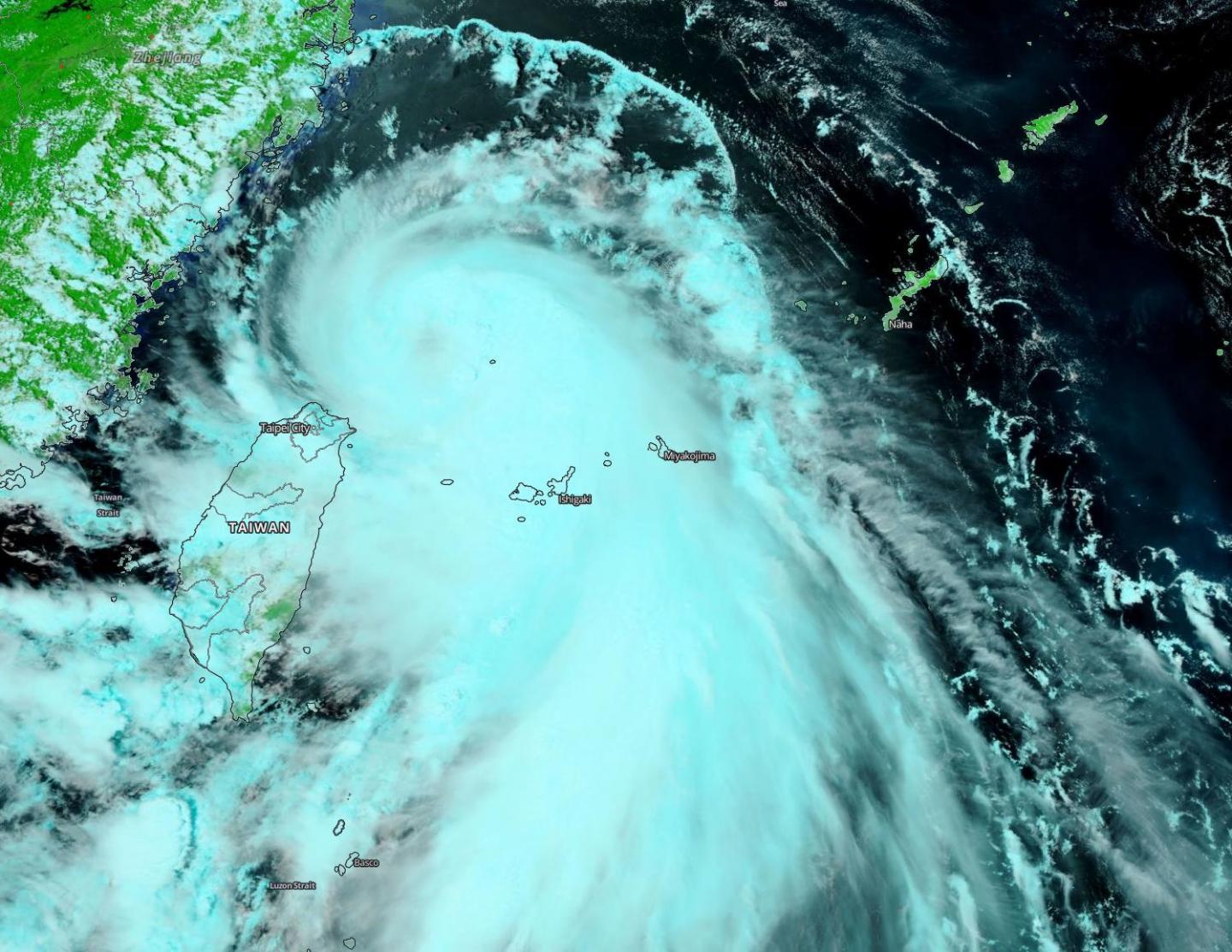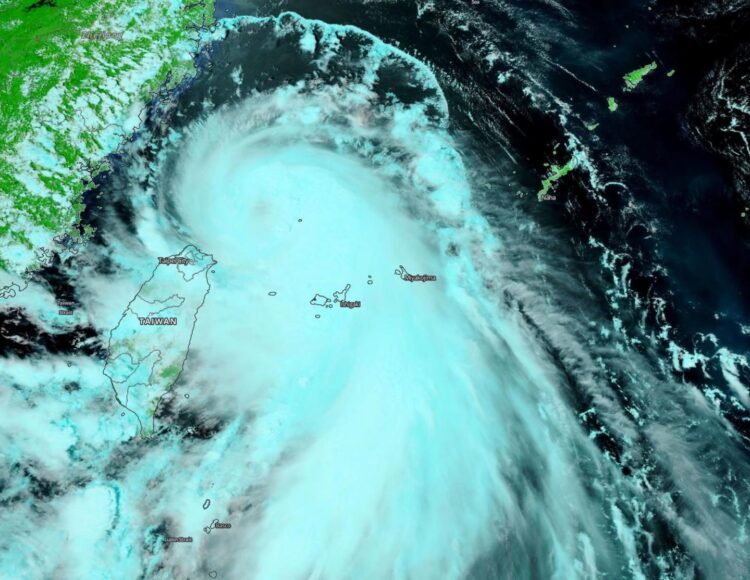
Credit: NASA Worldview, Earth Observing System Data and Information System (EOSDIS)
NASA-NOAA’s Suomi NPP satellite provided forecasters with a visible image of Typhoon Hagupit in the Northwestern Pacific Ocean that showed the development of an eye as it quickly intensified. Imagery also showed a thick band of thunderstorms that resembled a giant tail, spiraling into the powerful storm.
Tropical Depression 03W formed northeast of Luzon, Philippines on August 1 and was renamed Hagupit when it strengthened to a tropical storm on Aug. 2. By Aug. 3, Hagupit had quickly intensified into a typhoon.
On Aug. 3, the Visible Infrared Imaging Radiometer Suite (VIIRS) instrument aboard Suomi NPP revealed that the storm had developed an eye, although it appeared somewhat obscured by high clouds. VIIRS showed that powerful bands of thunderstorms had circled the eye. A large, thick band of thunderstorms that extended south-southeast of the center looked like a giant tail on the VIIRS imagery. Hagupit was northeast of Taiwan at the time Suomi NPP passed overhead.
At 5 a.m. EDT (0900 UTC) on Aug. 3, the Joint Typhoon Warning Center (JTWC) noted that Hagupit had maximum sustained winds near 65 knots (75 mph/120 kph), making it a Category 1 hurricane on the Saffir-Simpson Hurricane Wind Scale. The center of Hagupit was located near latitude 26.8 degrees north and longitude 122.2 degrees east. It was centered about 285 nautical miles west of Kadena Air Base, Okinawa, Japan. Hagupit was moving northwest.
Hagupit is forecast to make landfall later today, Aug. 3, south of Shanghai and curve north then northeast. The center of the storm is expected to pass to the west of Shanghai and then re-emerge into the East China Sea.
###
NASA Researches Tropical Cyclones
Tropical cyclones/hurricanes are the most powerful weather events on Earth. NASA’s expertise in space and scientific exploration contributes to essential services provided to the American people by other federal agencies, such as hurricane weather forecasting.
For more than five decades, NASA has used the vantage point of space to understand and explore our home planet, improve lives and safeguard our future. NASA brings together technology, science, and unique global Earth observations to provide societal benefits and strengthen our nation. Advancing knowledge of our home planet contributes directly to America’s leadership in space and scientific exploration.
By Rob Gutro
NASA’s Goddard Space Flight Center
Media Contact
Rob Gutro
[email protected]
Original Source
https:/





